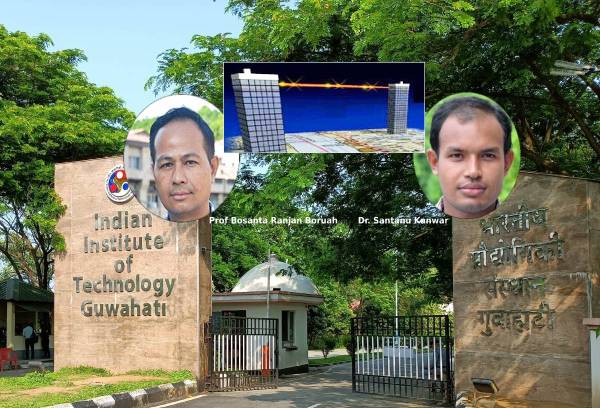
February 15, 2023: Just over two years after their pathbreaking innovations in the technology of transmitting digital data wirelessly in the form of light pulses was sealed with three global patents, IIT Guwahati Physics Professor Bosanta Ranjan Boruah and his PhD student Santanu Kanwar, now an Assistant Professor, teaching Physics in Abhayapuri College in Assam, have achieved an important landmark:
Unlike so much of academic work that remains within the covers of doctoral theses, the novel “ Free Space Optical Communication System” (FSO) developed by the duo has been technology-transferred to a private sector Indian company who is arguably the leading provider of optical wireless solutions.
A release from IIT Guwahati, has announced that the transfer of technology has been completed to Ahmedabad-based Nav Wireless Technologies, which has hitherto exploited another optical communication technology – LiFi or light-based WiFi.
We spoke to both co-developers of the technology to understand why this made-in-India solution claims to innovate in a communications arena that has been around for a decade or more and is being tried in many countries.
They explained that simply put, FSO replaces physical data communication channels like fibre optic cable with an optical system, where data is converted into optical pulses representing ones and zeroes and transmitted wirelessly to a receiver where an optical receiver unscrambles the pulses and reconverts it back into digital data. Such systems can send and receive data at very high speeds – around 1.25- 1.5 gigabits per second – and the IIT Guwahati researches have achieved distances of up to 1 km, in a lab set up.
This can – and presumably will – be scalable to larger distances by the tech partner, Nav Wireless Technologies.
Dr Kanwar explained that the patents earned by the work. (The 16-page US patent can be read here) spell out how their system overcomes the main obstacles to uninterrupted FSO communication, weather conditions like fog. He added: “Our system is highly secure and it requires multiple keys to decode the data… there is no possibility of unauthorised interception.”
This suggests why world-wide military agencies including the US Defence Advanced Research Projects Agency (DARPA, have been among the earliest to embrace free space optical communication.
The pluses of the IIT Guwahati technology -- enhanced security features and the ability to overcome severe atmospherics, would make it an ideal for India’s armed forces along the northern and north-eastern borders where low visibility and fog/snow are perennial challenges
The only requirement is that multiple towers, within a few kilometers of within each other’s line of sight are required to bounce the optical signals across the terrain. The other option tried by some military users is to bounce the signal off satellites.
In the civilian sector too, the FSO solution when rolled out commercially will help provide secure and high-speed data communications for enterprise customers.
Says Prof Boruah: “Free space optical communication is likely to play a crucial role in the coming days both in case of indoor applications and outdoor especially in the defence sector. We will be looking forward to meet the challenges as our technology is adapted to serve the society.
Adds Hardik Soni, Nav wireless Technologies’ CTO & Co-Founder: “NavTech is a pioneer in India doing research on Optical Wireless technologies developing applications, and manufacturing LiFi and FSO products & solutions. We are glad to join hands with one of India’s premier technology institutions for further development of Optical Wireless technology.”
The work of these Assam-based researchers will hopefully result in the coming months in the rollout of robust systems that will ensure Indian ownership and control over mission -critical communication technology for both civilian and defence applications.
For illustrations see Image of the Day